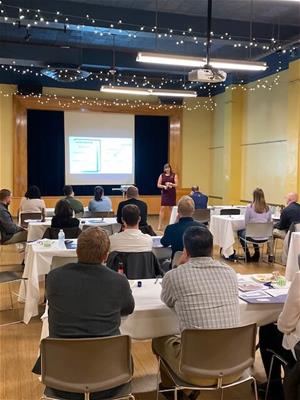Tools to Address Human Error Reduction
PDA Pacific Northwest Chapter
 No human is perfect. That is a given. So how can we help prevent issues due to human error during the pharma manufacturing process?
No human is perfect. That is a given. So how can we help prevent issues due to human error during the pharma manufacturing process?
Virginia Andreotti-Jones provided some tools for members of the Pacific Northwest Chapter in the introductory seminar, “Human Error Reduction,” held Oct. 24, 2019, in Seattle.
Andreotti-Jones began with a look at the foundations of human error reduction. The first step, she said, is accepting that all people make mistakes. This means assuming no malice on the part of the individuals involved, avoiding blaming language, keeping communications open and focusing on a system approach to resolving the issue.
Next, she outlined two tools for preventing human errors. The first, a pre-job briefing, is given prior to an activity with a discussion led by front-line personnel. This meeting should take about 10 to 15 minutes to discuss the task, documentation, roles and responsibilities, critical steps, potential errors and mitigation, operator tips, troubleshooting strategies and stop-work points.
The second tool, according to Andreotti-Jones, is a root-cause decision tree. The decision tree takes a systematic approach to assess materials, machinery, maintenance, measurements, the environment, methods and training. It helps ensure systems are analyzed to identify and eliminate underlying causes of human error. This approach leads to more meaningful CAPAs and prevents human error in the future.
Examples of both tools and case studies of their use can be found on the Pacific Northwest Chapter website.
PDA Who's Who
- Virginia Andreotti-Jones, QA Supervisor, Partner Therapeutics


